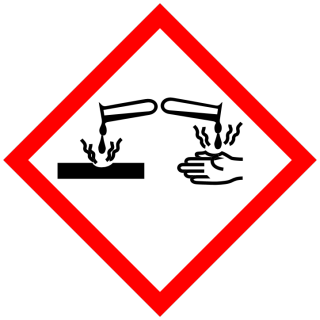Hazardous chemicals
Exposure to chemicals is 100% preventable. Without the proper controls chemical exposure can cause cancer, respiratory illnesses, skin and eye irritations, as well as fire and explosion-related injuries.
Priority hazardous chemicals
Reducing exposure to hazardous chemicals at work is essential to creating a healthy, safe and productive workplace.
There are thousands of hazardous chemicals used in the workplace, from paints to pesticides, cleaners and fuels. They come in various forms – powders, solids, liquids and gases.
If you have a large amount of hazardous chemicals, go to hazardous chemicals notification page.
Select a hazardous chemical below to learn how to protect yourself.
-
Acrylamide
Acrylamide is a white odourless crystalline solid. It is soluble in water, ethanol, ether and chloroform.
-
Benzene
Benzene is a clear, colourless and flammable liquid that can originate from natural sources (crude oil) or be produced from chemical processes.
-
Carbon monoxide
Carbon monoxide is an odourless gas produced as a result of incomplete combustion processes.
-
Chromium VI
Chromium (VI) is a toxic form of the metallic element chromium, and is typically generated through industrial processes.
-
Crystalline silica (quartz)
Crystalline silica (quartz) is a natural mineral found in many products, such as sand, concrete and granite.
-
Dichloromethane
Dichloromethane, also called methylene chloride, is a volatile, colourless, non-flammable liquid with a sweet ether-like odour.
-
Formaldehyde
Formaldehyde is a colourless, irritating and unpleasant smelling flammable gas.
-
Isocyanates
Isocyanates are a group of highly reactive organic compounds that easily become volatile and enter the atmosphere as a vapour.
-
Methyl bromide
Methyl bromide (bromomethane) is a colourless, non-flammable gas with no taste or odour at low concentration.
-
Welding fumes
Welding processes can generate fumes which are tiny solid particles and gases.
-
Xylene
Xylene, also known as Dimethyl Benzene, is a colourless, sweet smelling liquid or gas that is widely used as a solvent.

Must do’s
There are specific laws about working safely with hazardous chemicals. Here we summarise those laws and give you some practical tips:
We also have information on exposure to chemicals in nail salons.
Globally harmonised system (GHS)
Key information on hazardous chemicals
-
Airborne contaminants
Airborne contaminants
Air should not contain chemical agents at concentrations that affect health, safety or well being. -
Chemicals and the GHS
Chemicals and the GHS
A new system of chemical classification and hazard communication came into effect in NSW in 2017. -
Explosives & fireworks
Explosives & fireworks
Our laws, licensing, and notifications system works together to regulate explosives, certain security sensitive dangerous substances and fireworks. -
Farm chemicals
Farm chemicals
Many pesticides used in the agricultural sector contain hazardous chemicals that can have short and long-term health effects if not managed safely. -
Flammable substances
Flammable substances
Flammable and combustible substances must be kept in the lowest practical quantity at the workplace. -
Glyphosates and organophosphates
Glyphosates and organophosphates
Chemicals containing glyphosate (commonly known as Roundup) and some other common pesticides have been assessed as being potentially carcinogenic to humans. -
Hazardous atmospheres
Hazardous atmospheres
Atmospheres affected by hazards such as insufficient oxygen, flammable gases and combustible dusts can pose an immediate threat to life or can interfere with the ability to escape unaided. -
Lead work
Lead work
Lead can harm your health and can be inhaled through dust, fumes or mist. It can also be swallowed. -
PFAS firefighting foams
PFAS firefighting foams
Information to current and ex-workers on the potential health concerns regarding the use, handling and storage of PFAS containing aqueous film forming foams (AFFF) and their contaminants.
